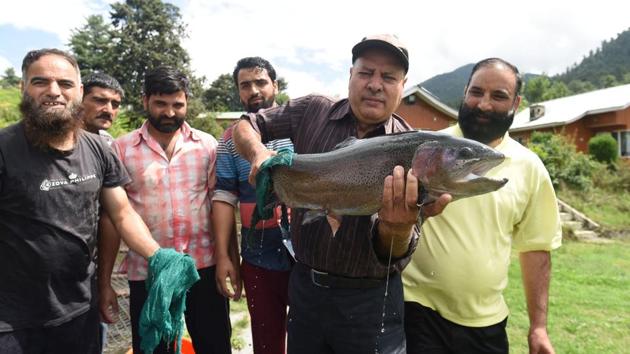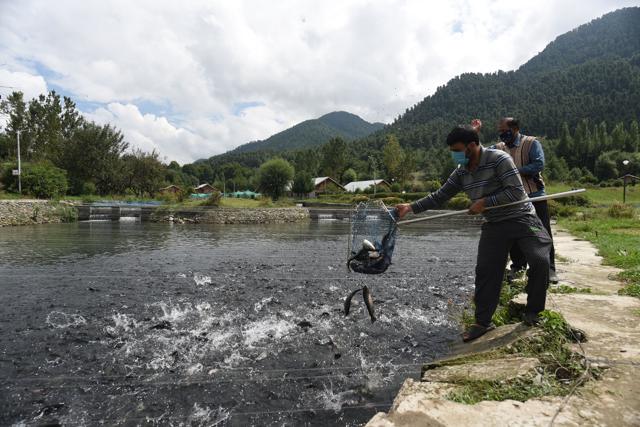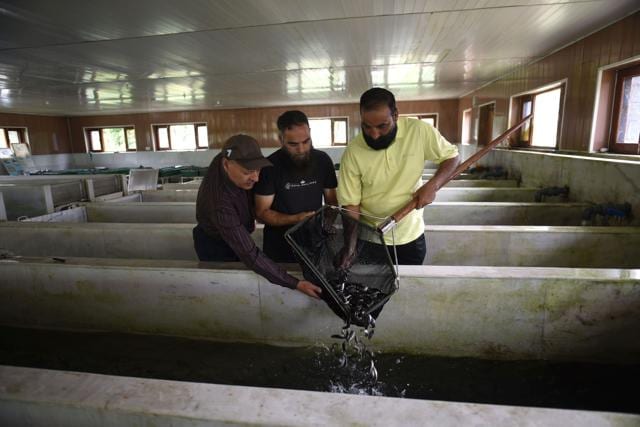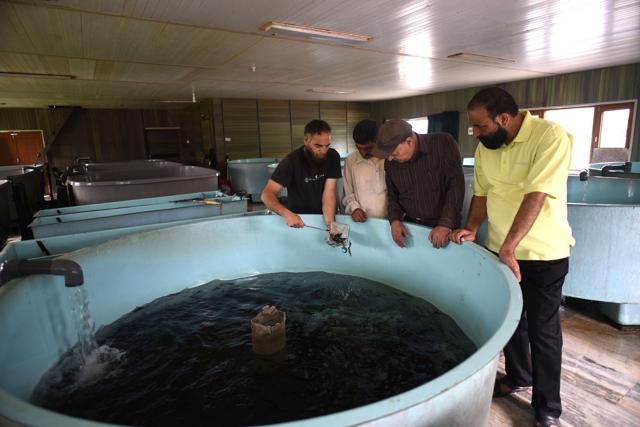Kokernag offers bait to private players angling for trout farming
With Asia’s largest fisheries farm in South Kashmir’s Anantnag district emerging as the best producer of rainbow trout in the world, private farms are taking to trout rearing and finding it commercially viable
The weekend getaway of Kokernag, 22km from Anantnag, is home to Asia’s largest fisheries farm that is emerging as the best producer of rainbow trout in the world.

Spread over 20 hectares, the farm was set up 36 years ago with support from the European Economic Committee. It started with a single hatchery which has now been upgraded to three hatcheries that supply millions of eyed ova and seeds to beneficiaries, including private fish farmers.
Trout farming in the private sector was introduced by the government in 2009 and has been a success. At present, there are more than 540 private farms rearing trout and earning their livelihood in Kokernag.
Just the right conditions
The chief trout farming project officer at Kokernag, Mohammad Muzaffar Bazaz, says Kashmir has two types of fisheries, warm and cold water. “For trout culture, the temperature shouldn’t exceed 20 degrees Celsius. Brown trouts are in abundance in the upper reaches,” he says.
Being the first fisheries postgraduate (MFSc) of Kashmir, Bazaz has a special liking for this farm and spends his entire day at the hatcheries, raceways and streams to keep a watch on the trouts.
“We have our own brooders and get eggs and white milt from them. We rear rainbow trout for commercial purposes only as is done in the rest of the world,” he says, showing the brooders swimming in the clear water of the gushing stream.

Explaining the hatching process, he says, the eggs from females and white milt from male brooders are harvested by stripping their bellies. “The eggs are fertilised in hatcheries by keeping them in trays that are put under running water. It usually takes a month to hatch these eggs into fry, which are put on high protein feed. The fish are shifted from hatcheries to outside and the recipe of feed is changed till it attains table size weight suitable for commercial farming,” Bazaz says.
Plenty of potential
Kashmir leads trout production in India with over 500 tonnes every year. “This is entirely consumed locally so there is potential and more private players are moving towards rearing trout,” he says.
Last year, the farm earned ₹1.83 crore out of which it sold seed for ₹40 lakh to private farmers. “The breeding coincides with winter and due to heavy silting and changing water parameters, the farm produces 40 lakh green ova out which it gets 15 lakh fry,” he says.

“I have been rearing trout in my farm for two years. Once the fish attain table size, I get customers here at my farm. The trout is commercially viable,” says Ajaz Ahmad, the owner of a private farm in South Kashmir.
Hard work and expertise
Kashmir is also known as the anglers’ paradise for which tourists, particularly foreigners, head for the high-altitude water bodies. “Usually, brown trout is found in high-altitude lakes and streams as it feeds on animal prey species unlike rainbow trout. It’s needs a special expertise to catch trout,” says Manzoor Bhat, an angler from Tangmarg.
Syed Manzoor, a senior supervisor at the Kokernag farm, says the breeding season is from October to February when seed is collected from the fish.

“We know which fish is ready for stripping. To keep the hatcheries clean and harvesting the eggs is a hectic process that needs expertise for which we have trained staff. We have to regularly feed the fry and then the fish at different stages besides cleaning the raceways. Everything is done manually. We even produce the feed here,” he says.
How the journey began
In Kashmir, the first trout ova, comprising 10,000 eggs, came from the United Kingdom in 1899. The entire batch perished. The second batch arrived from Scotland a year later, out of which 1,000 fry were transferred to Panzagam Dachigam (Harwan) and the rest reared in the premises of a private carpet factory owner in Baghi, Dilawar Khan, in the midst of the city.






